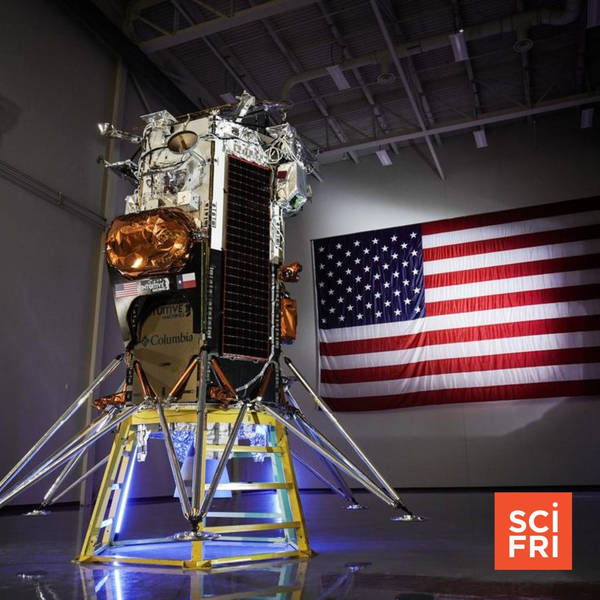
Odysseus Lander Heads To The Moon | Ohio Chemical Spill, One Year Later
If successful, Odysseus will be the first U.S. spacecraft to land on the moon since the Apollo mission. And, in East Palestine, Ohio, the stream that flows under residents’ houses is still polluted following a train derailment and chemical spill.
Odysseus Lander Is On Its Way To The MoonJust after 1:00 a.m. on Thursday, February 15, SpaceX successfully launched a commercial spacecraft from NASA’s Kennedy Space Center in Florida. Its destination? The moon. If the lander—named Odysseus—makes it all the way there, it’ll be the first U.S. spacecraft to land on the moon since the Apollo mission, more than 50 years ago.
If successful, this mission will also mark another historic milestone: the first commercial spacecraft to touch down on the moon.
Ira talks with Casey Crownhart, climate reporter at MIT Technology Review, about this latest lunar mission and other science news of the week, including: a satellite to detect methane leaks from space, the development of lithium-sulfur batteries, the first treatment for frostbite, the development of “heart-on-a-chip” devices, a frog with a mushroom growing out of its leg, and how eavesdropping on the love songs of Skywalker gibbons helped scientists estimate their population size.
A Year After Chemical Spill, Ohio Community Is Still RecoveringChristina Siceloff and Randy DeHaven walk down a short bank to Sulphur Run, a creek that winds between houses in East Palestine, Ohio. They make their way to a section of the stream about three-quarters of a mile from where the Norfolk Southern train derailed last February 3rd. Siceloff has brought a shovel, but she doesn’t even need one to show the condition of the stream. She just pushes her rubber boot into the sandy streambed, and an oily sheen erupts out of the muddy bottom, spreading on the top of the brownish-grey water.
“Kind of like what you would see in a puddle at a gas station,” Siceloff said.
Siceloff has brought a mask because the creek water still gives her headaches. For much of the past year, she’s been helping DeHaven and a group of volunteers document the condition of the stream. Siceloff lives a few miles away in Darlington, Pennsylvania, and could see smoke from the 2023 derailment and subsequent fire from her bedroom window. She was sick for five and a half months, as were her father and son.
“I had migraines, congestion, runny nose. I had pressure in my ears, burning in my nose, eyes and throat,” Siceloff said. She now has tremors in her hands, and her eyes twitch. She sneezes in the laundry soap aisle at Walmart and can’t stand the chlorine smell at a swimming pool.
In the days after the derailment and subsequent chemical spill, over 40,000 fish and other species died. DeHaven, who lives in town and has been filming the stream for much of the past year, saw it firsthand. “Most of the frogs were belly up,” DeHaven says. “There was a few fish floating, but a lot of them were just laying on the bottom.”
Now, a year after the derailment, regulators say they have cleaned up the site, and that the air in town is clear.
But the stream running through the middle of town is still contaminated and some in the area still worry about whether the chemicals sitting at the bottom of the stream are going to make their way into peoples’ bodies.
Read more at sciencefriday.com.
Transcripts for each segment will be available after the show airs on sciencefriday.com.
Subscribe to this podcast. Plus, to stay updated on all things science, sign up for Science Friday's newsletters.
